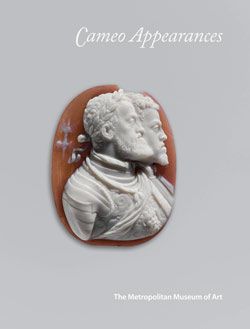Head of Hercules
Not on view
The head of Hercules framed in a helmet formed by the open jaws of the Nemean lion, the dead beast’s paws tied around his neck, was a staple of Neoclassical glyptics inspired by ancient gems and coins (see also 40.20.37). Within the format endless variations could appear. Both this carving and 40.20.48 have three strata. The anonymous carver, who chose a stone so fiery it has even been wrongly said to be artificially colored, manipulated the pale middle layer to limn the blunt profile, offset between the reds of the ground and top layers. Maria Elisa Pistrucci worked closely from a composition by her father (art market, Rome, 2007), who invented a younger, more lyrical type of Hercules. The dappled brown stone she selected produced, simultaneously, greater legibility and greater subtlety. The lion skin emerges clearly from the dark top layer, all the facial features were excavated from the middle white layer, and irregularities in the translucent bottom layer provide an appealing foil.
Due to rights restrictions, this image cannot be enlarged, viewed at full screen, or downloaded.


